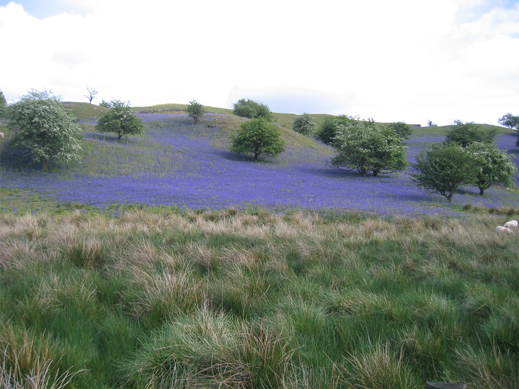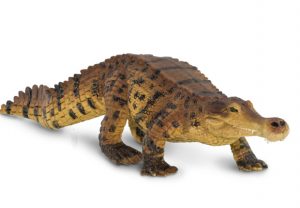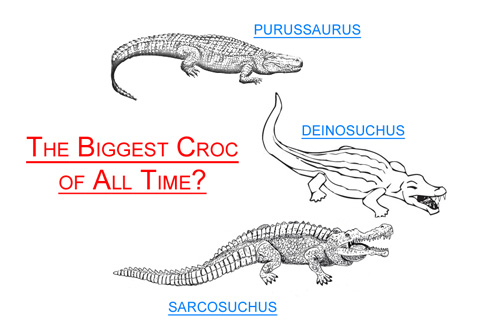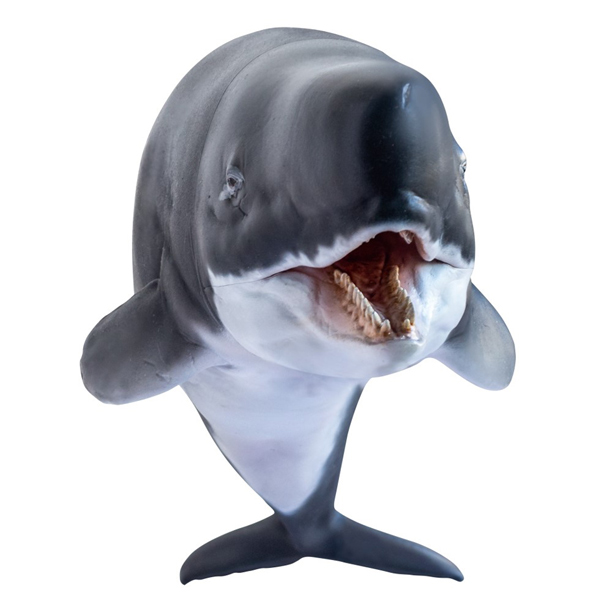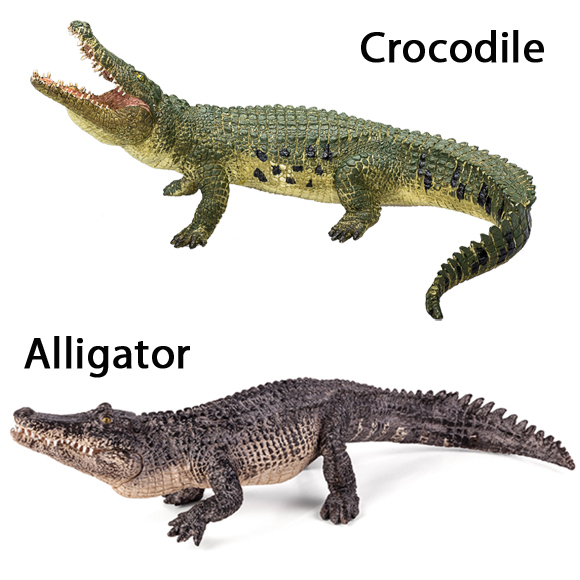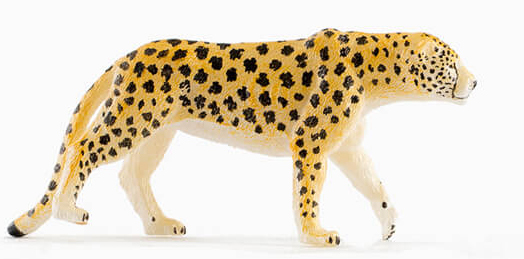New Fossil Discovery Suggests Giant Birds Lived During the Mesozoic
Most scientists now agree that the birds (Aves) are descended from a particular group of dinosaurs – theropods, but the accepted view that birds were small, crow-sized creatures living very much in the shadow of their reptilian cousins has been challenged once again with the discovery of a single jawbone fragment. This fossil suggests that giant prehistoric birds, the size of the largest bird living today (Ostrich), could have roamed amongst the dinosaurs during the Late Cretaceous.
Giant Prehistoric Birds
Ironically, the fossil languished in a museum collection before its significance was recognised, as we at Everything Dinosaur know from experience, sometimes an animal new to science can be found within a museum’s collection. Either the key, holotype fossils have been incorrectly assigned to an already known species or in many cases the importance of the fossil is simply not recognised. Even new dinosaur species can be found lurking inside museum cabinets and collections.
To read an article on discovery dinosaurs inside museums: The Best Place to Find a New Dinosaur Inside a Museum.
Two lengths of bone were uncovered at a dig site in southern Kazakhstan (Kyzylorda district) by a joint Soviet-East German scientific expedition in the 1970s. The fossil fragments were carefully prepared and put together to make a jaw almost thirty centimetres in length but the significance of the fossil was not recognised. It was the property of a German collector for a number of years and then went on display in a Belgian museum.
Scientists Study Fossil
Fossils come from strata associated with the Bostobynskaya Formation (also known as the Bostobe Formation). It has been dated to the Late Cretaceous approximately 85 million years ago. The team of scientists, including Gareth Dyke from University College Dublin, dissolved away the plaster and glue that had been used to prepare the fossil fragments in the 1970s to reveal the true fossil bone.
The research paper co-authored by scientists from University College, Dublin, University of Portsmouth, Museo Geologico e Paleontologico (Bologna) plus contributions from French and Belgium based researchers has been published in the scientific journal “Biology Letters”.
Dr Dyke commented:
“This is one of the largest birds that’s ever been described of any age. We don’t have much of it, but we know the lower jaw is at least as big if not bigger than the Ostrich lower jaw. At the age it is, it’s pretty exciting.”
Although, the toothless jawbone indicates a member of the Aves, some scientists have proposed that the specimen could represent a member of the Dinosauria, after all, toothless dinosaurs with beaks are known from the Late Cretaceous fossil record and a number of different types of dinosaur do have a number of anatomical features that closely resemble those of extant birds – dinosaurs such as members of the Oviraptorosauria, ornithomimids and Alvarezsauria for instance.
Giant Size in the Aves
Images show two possible body plans for S. nessovi, firstly that of a flightless bird such as an extant Emu or Ostrich, secondly, as a bird capable of flight. The human figure (looking remarkably like the statue of David by Michelangelo), provides scale. The small bird in the diagram represents the size of a typical Late Cretaceous flying bird as known from other fossil material found in Asia.
Dr Dyke added:
“We have always assumed that giant size in birds was something that evolved relatively late in the history of the group, so to find a specimen so early is remarkable. This is a giant of a bird with no teeth from the Late Cretaceous.”
The world of fossilised birds has been subject to a number of seismic shocks recently. For example, Chinese scientists have reported that the iconic fossil of Archaeopteryx (A. lithographica) may not actually represent a bird at all. These scientists have postulated that Archaeopteryx may be a feathered, cursorial theropod.
To read more about this issue: Is Archaeopteryx about to be Knocked off Its Perch?
Samrukia nessovi
The fossil has been ascribed to the Aves and it has been formally named Samrukia nessovi. This creature is named after a mythological phoenix-like bird from local legend – the Samruk. The specific name honours Lev Nessov, an eccentric Russian palaeontologist who used to take the bus or train from St Petersburg into Central Asia to embark on long hikes into the desert to hunt for fossils. He committed suicide in 1995 at the age of 48 after the breakup of the Soviet Union restricted his travels.
The researchers are unsure as to whether S. nessovi was flightless or not. Based on measurements from the single fossil jaw, they have estimated that if it had the same body shape as an Ostrich, it would have stood between two and three metres tall. If it resembled an Albatross it would have had a wingspan of over four metres. Unfortunately, with only one fossil specimen to work with it is impossible to say much more about this creature.
Giant Birds of the Cretaceous
The fossil is only the second giant, land-living bird species to be discovered in Cretaceous-aged rocks and the first to be found in Asia. A previously recognised species, Gargantuavis philoinos, was named in 1998 from France but experts have argued over its identification. If Samrukia nessovi is a bird as scientists suggest the new, Kazakh specimen would help confirm the presence of giant prehistoric birds in the Cretaceous period.
Dr Darren Naish, an eminent palaeontologist from the University of Portsmouth, said that the creature provides significant new information on life in Cretaceous times.
He stated:
“Since the 1850s we’ve known that numerous bird species lived during the age of the dinosaurs (known as the Mesozoic Era), but virtually all were crow-sized or smaller. The Ostrich-sized Gargantuavis from France is the one notable exception and now this new Mesozoic bird from Kazakhstan – known only from its toothless lower jaw – shows that gigantic birds also lived in Cretaceous Central Asia.”
Although unsure whether or not this bird was flightless or whether it took to the skies, Dr Naish added:
“We can now be really confident that Mesozoic terrestrial birds weren’t all thrush-sized or crow-sized animals, giant size definitely evolved in these animals and giant forms were living in at least two distinct regions. This fits into a larger, emerging picture that Mesozoic birds were ecologically diverse, with lots of overlap between them and modern groups.”
Dr Naish concluded:
“The fragmentary nature of our Samrukia specimen will always mean that some people have doubts about it, but specialists who have seen the remains agree with our interpretation. The French Gargantuavis has already demonstrated the presence of giant Cretaceous birds and we argue that Samrukia adds a second example and increases the significance of Gargantuavis since it shows that it wasn’t a one off.”
Unfortunately, the absence of other fossil material prevents the scientists from finding out much more about this creature that is new to science. They can only speculate on what it ate for instance. Did S. nessovi hunt small dinosaurs, or was it an omnivore perhaps? Just how big was this giant prehistoric bird?
Dr Naish commented:
“We have only the lower jaw, and this doesn’t provide key information on what the whole bird was like. Hopefully new material will be unearthed to provide us with more information, such as understanding what role it was playing in Cretaceous ecosystems. We do know that the fossil came from a floodplain environment. This would have been a large flattish plain, criss-crossed by big, meandering rivers. Fossil wood shows that forests were present nearby and aquatic animals indicate the continual presence of lakes, pools or big rivers.”
Dr Naish added:
“Samrukia was conceivably in danger from tyrannosaurs, dromaeosaurs and other predatory dinosaurs that occurred in the same region but we can’t say whether Samrukia itself was predatory, herbivorous or omnivorous as the lower jaws don’t reveal any obvious specialisations for, say, dedicated plant-eating or feeding on aquatic prey.”
Giant Prehistoric Birds Alongside the Dinosaurs
Hopefully, new fossil finds will help scientists to piece together (literally), more information about this strange creature from the Late Cretaceous. If more fossil material is found, then scientists may be able to confirm that Samrukia nessovi is a bird to resolve the puzzle of whether or not it could fly and what it ate.
Dr Naish concluded:
“People tend to forget that birds co-existed with their dinosaurian relatives but it now seems that the Cretaceous was not a ‘dinosaurs-only theme park.’ This find confirms that large birds were living alongside dinosaurs and may have been more widespread than previously thought.”
For models and replicas of Late Cretaceous prehistoric animals: Wild Safari Prehistoric Animal Models and Figures.


